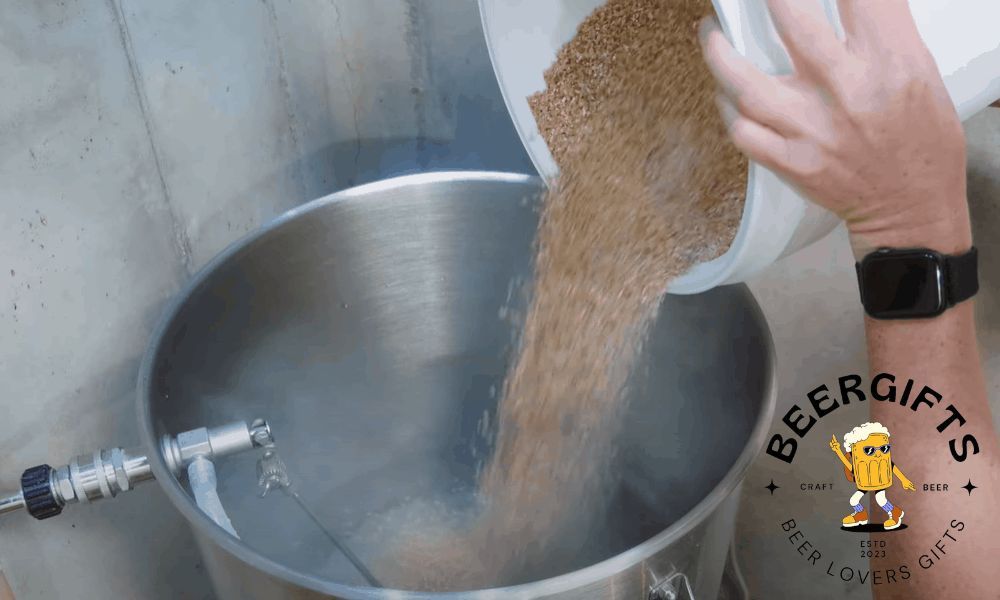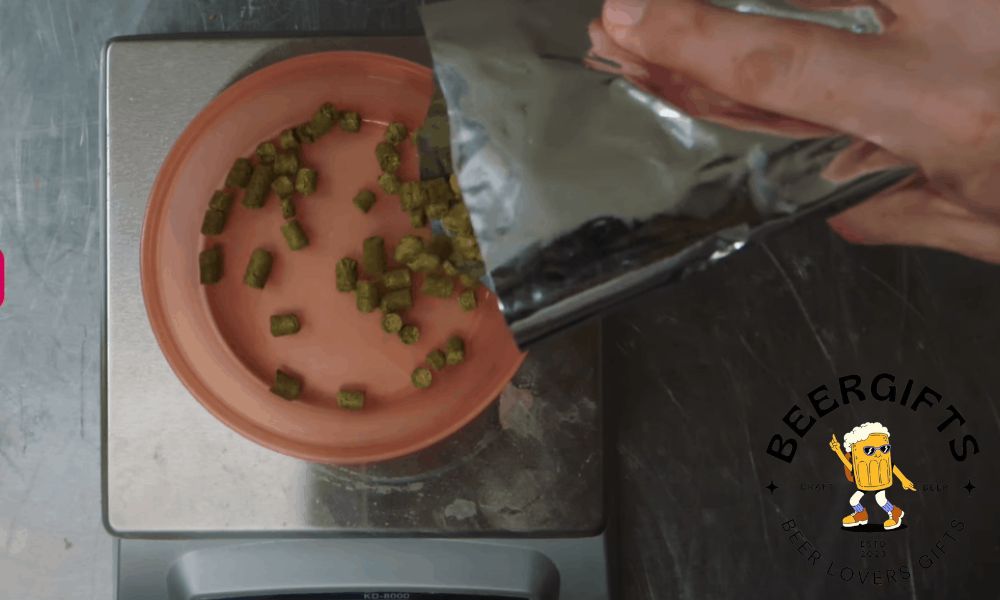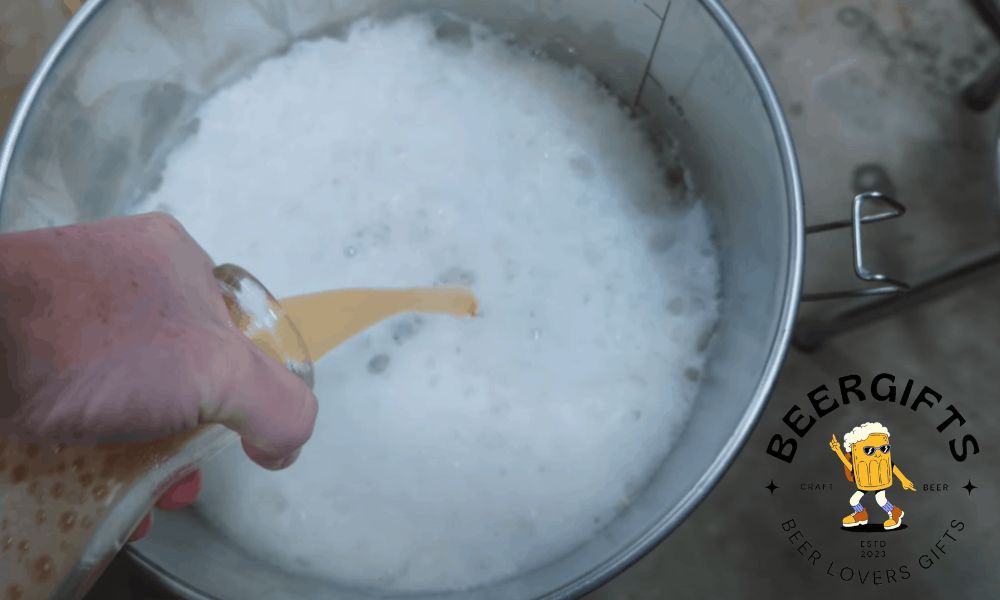Cream ale is a distinctly American beer with a rich history dating as far back as the 19th century. A hybrid between a true ale and a lager, the cream ale style of beer is mild on the flavor, dry, and admittedly dull but packs a refreshing punch that makes it a favorite summer thirst-quencher.
Contrary to its name, this beer does not contain any cream or milk product. Rather, it is a single grain single hop beer, which makes it easy to brew at home, as you won’t have to mess around with a bunch of grains and a variety of hops.
We’ll show you how to make cream ale using grain malts and basic brewing equipment.
Tools for Making Cream Ale
Here is the basic equipment you will need to brew your cream ale:
- 5-gallon stock pot
- Fermenter bucket
- Grain strainer bag
- Long-handled spoon- stainless steel or plastic
- Kitchen timer
- Kitchen thermometer
- Ice
- Storage bottles
You will also need:
- Sanitizer
- Siphoning equipment
There are numerous recipes for making cream ale. We’re using a super simple, no-fuss recipe that lets you get the job done fast so you can get to the fun part: drinking your cream ale! Of course, you can tweak this recipe to come up with a signature ale that suits your taste buds.
Here is what you will need:
Fermentable Ingredients
- 1l lb Pilsner malt
- 7 oz. cane sugar
Hops
- 1 ounce (60 minutes)
- 1 ounce (10 minutes)
Yeast
- Wyeast 1007 (German Ale) yeast
Water
- 7 gallons distilled water
Step-by-Step Guide to Make Cream Ale
Follow these simple steps to make your cream ale beer. Remember to pay attention to the recommended temperature ranges for mashing, boiling, and fermenting. Any slight temperature deviation will affect the way your beer will come together in the end.
Step 1: Steep the grain
Fill a 5-gallon pot with water and heat it to 1500F. Place the Pilsner grain malt in a grain bag and tie the bag at the top. Leave some headspace at the top of the bag to give the grain room for expansion when it comes into contact with hot water.
Slowly, lower the grain bag into the pot ensuring that the grains are completely saturated. Remove the pot from the heat and seal for 60 minutes to extract the aromas and flavors of the Pilsner grains.
While there are many other grain choices, Pilsner malt is an excellent pick for making cream ale because the malt is mildly grainy and light in flavor. These qualities result in a laid back, low-bitterness, and medium-bodied beer that even an amateur will enjoy drinking repeatedly.
After 60 minutes of steeping the grains are over, unseal the pot and squeeze the grain bag to extract all the liquid from the mash. The resulting liquid is called wort.
Step 2: Add the hops
Cream ale is a low-bitterness beer style. So, you want to use hops with a low alpha acid content and equally low on the International Bitter Unit scale (IBU).
This recipe uses Crystal hops, which are a typical American hop variety cultivated by crossbreeding three different hops: Cascade, Hallertau, and Brewers Gold. The result is hops with a warm earthy and woody aroma with fruity undertones. If you would like to learn more about choosing hops, be sure to check out this tutorial.
To achieve the desired bitterness profile, we will add the Crystal hops for 60 minutes after the wort comes to a boil and the rest of the hops at 10 minutes before flameout.
So, return the stock pot containing the wort to the stovetop and boil on high heat. Once the wort comes to a boil, add the first 1 ounce of hops into the water and set the timer for 60 minutes.
Allow the mixture of wort and hops to boil for 50 minutes. In the remaining 10 minutes, add the other ounce of hops into the boiling pot of wort. Cover and allow the solution to boil for the rest of the 10 minutes.
Now, turn off the heat and allow the hop and wort mixture to cool. The liquid should cool to below 700F. This is the ideal temperature for optimal yeast activity. When the temperatures are too high, the yeast will die and when they are too low, the yeast will not activate as required.
The fastest way to cool the wort is to use a wort chiller. But, if you do not have a chiller, you can improvise with an ice bath. Fill your sink or tub with ice cubes and water then submerge the pot for it to cool to the desired temperature.
Step 3: Add yeast to the solution
Now, it is time to add the most important ingredient in the beer-making process: the yeast. Like the malt grain, there is a variety of yeast strains from which to choose. But, to keep to the flavor profile of cream ale, opt for yeasts that have a dominant fruitiness. A good choice is the Wyeast 1007 or German Ale.
First, transfer the wort to a sanitized fermenter bucket. Be careful not to disturb the residue that has settled at the bottom of the stock pot. You want your cream ale to have a distinct clarity as opposed to the cloudiness that is common in homemade beers.
Cut the yeast packet, pour the entire contents into the wort, and stir for a few minutes to incorporate the yeast into the wort. Seal the fermenter bucket and then insert the airlock into the grommet hole on the lid.
Pro Tip: Make sure that the pair of scissors that you use to cut the yeast packet is sanitized to avoid contaminating your brew.
Step 4: Let the wort ferment
Once you add yeast to the wort, shake the fermenter bucket to aerate the wort. This will give the yeast much-needed oxygen for cell growth and superior fermentation.
Then, store the fermenter bucket in a moderately warm spot where the temperature is usually about 670F. Keep this bucket away from light and in an area with minimal disturbance.
About 48 hours after pitching the yeast, you will notice bubbles rising in the airlock. This shows you that fermentation is taking place and the yeast is breaking down the liquid into carbon dioxide (the bubbles) and alcohol.
Allow two to three weeks for secondary fermentation to be complete. You will now have your cream ale beer ready for bottling.
Pro tip: Yeast can make beer cloudy. To clarify your cream ale after fermentation, you could use the cold crash method. Here is a neat video from where you can learn more about cold crashing beer.
Step 5: Carbonate the beer
Before you can transfer your beer to drinking bottles, you need to carbonate it. After fermentation, the resulting beer is just flat but carbonation will add zing to your cream ale.
You will carbonate your beer using cane sugar. Prime the sugar by adding 5 oz of cane sugar to two cups of distilled water. Bring the mixture to a boil while you stir until the sugar dissolves. Turn off the heat and let the priming solution cool.
Now, pour the cool priming sugar solution into the fermenter bucket containing the beer and stir gently. Let this settle for about 30 minutes before you can proceed to bottle your beer.
Extended Tips
- Add a small amount of spritz to the cream ale to increase the feeling of dryness if this is a quality you would want your beer to have.
- Be mindful of your brewing environment. If you will be brewing in an area that lacks proper temperature control, this can affect yeast activity.
- Consider using more stable yeast such as Kölsch yeast that can withstand wide temperature variations. The staff at your local homebrew store can recommend suitable yeast strains.
Are you ready to brew your cream ale?
Making cream ale can be a positively challenging project as long as you are diligent about choosing the right ingredients. The goal is to strike a good balance between the malt and hops to achieve a fruity ester.
Priming your beer specifically with cane sugar is the little secret to giving your ale a crisp, dry-bone mouthfeel, which makes this beer style such an easy-drinker.
Try making cream ale today and enjoy the subtle yet refreshing flavors that this beer style has to offer.







